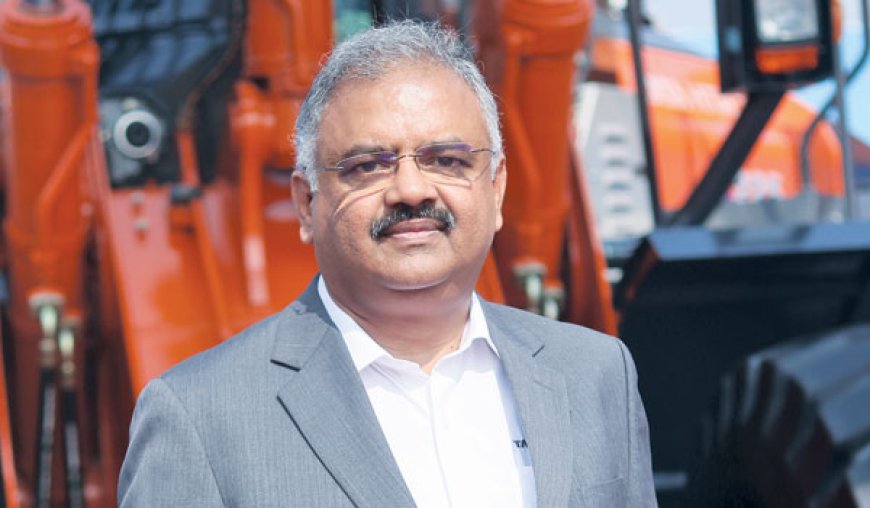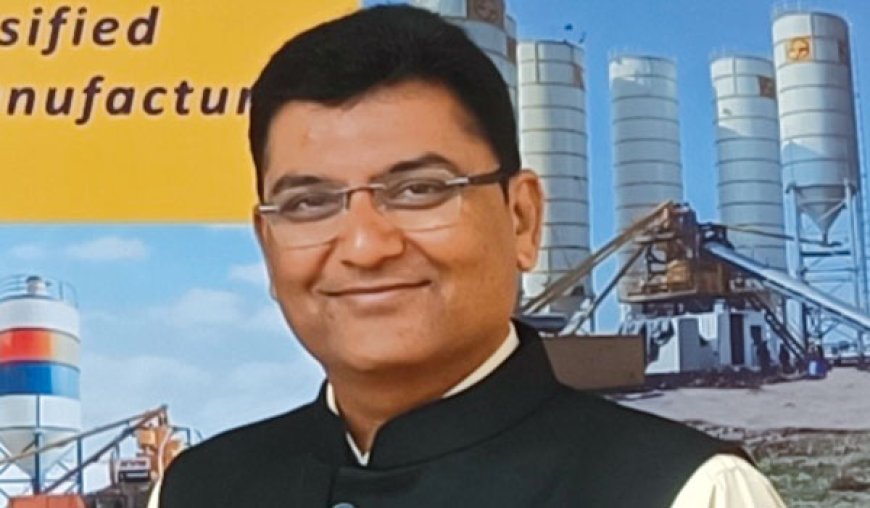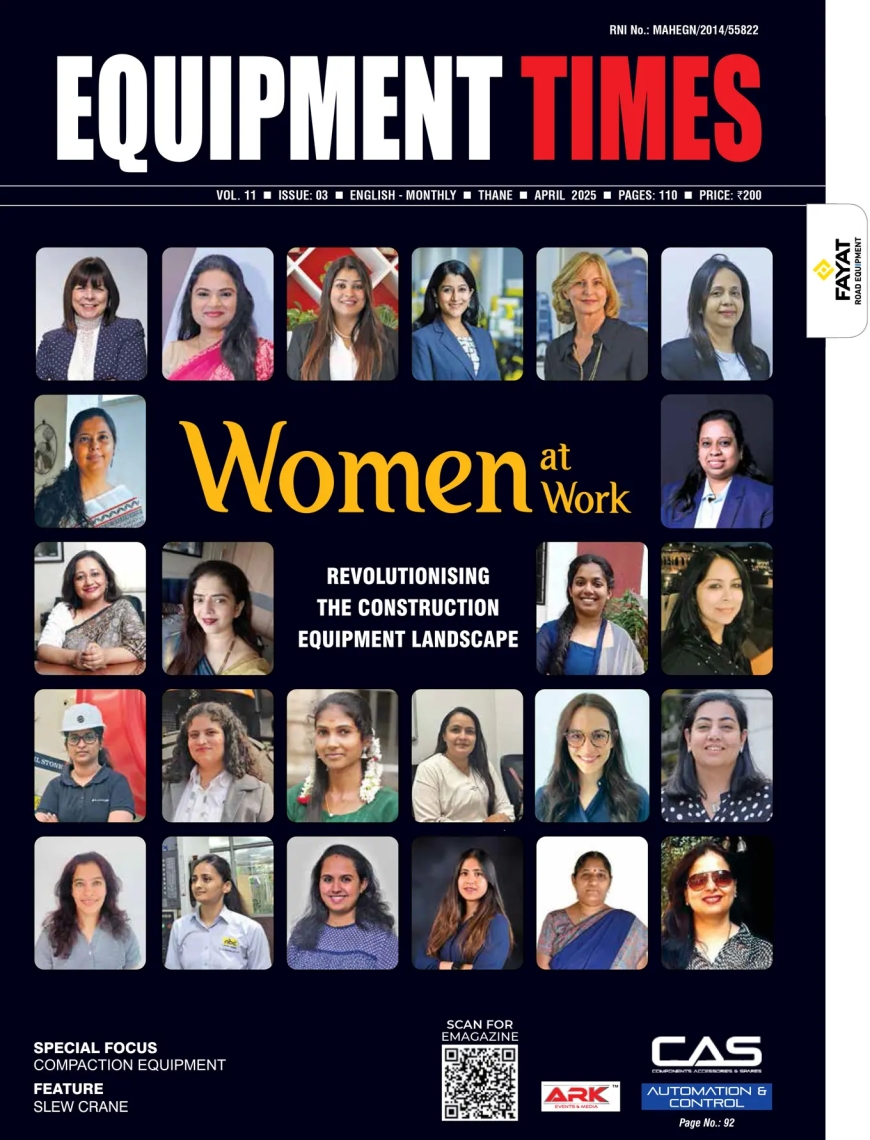NAVIGATING BOTTLENECKS Overcoming the Challenges in Construction Equipment Sector

The Indian construction equipment industry is confronted with numerous obstacles, including equipment failures, regulatory challenges, and budget limitations. Companies struggle to attain optimal operational efficiency, encompassing equipment utilization, labour productivity, and timely project delivery, posing a persistent challenge. Equipment Times looks into the perspectives on the challenges and bottlenecks within the sector, shortage of skilled labour, standardized certification process, unhealthy competition, current tax structure, challenges in the movement of equipment across state borders within the country, and regulatory or procedural hurdles in the sector.
In the vast landscape of industries, few sectors face as many intricacies and challenges as the construction equipment industry. From towering cranes to heavy-duty excavators, this sector forms the backbone of infrastructure development globally. However, amid the clang of machinery and the dust of construction sites, lies a complex web of taxation, policy, and transition bottlenecks that constantly tests the resilience and adaptability of industry players.
The Taxation Tangle…
Reflecting the government’s focus on infrastructure, there has been a 33% increase in the capital investment outlay for infrastructure under the Budget 2023-2024.
Foreign direct investment in India’s construction and infrastructure activities reached USD 3,248 million in FY 2022.
Taxation is a perennial concern for businesses across sectors, but in the construction equipment industry, it often takes on added layers of complexity. From taxes on equipment purchases to property taxes on inventory, the financial burden can be significant. Furthermore, differing tax regulations across regions and countries further complicate matters for multinational corporations operating in this space.
In recent years, the industry has also grappled with the implications of evolving tax policies aimed at promoting sustainability and reducing carbon emissions. Governments worldwide are increasingly incentivizing the adoption of eco-friendly equipment through tax breaks and subsidies. While this shift aligns with broader environmental goals, it poses both challenges and opportunities for manufacturers and operators alike.
Electric/Hybrid Equipment Surge…
Evolving preferences toward eco-friendly products, bolstered by government initiatives like the Faster Adoption and Manufacturing of Electric Vehicles (FAME) scheme, propels the electric/hybrid construction equipment segment.
Policy Pitfalls…
The construction equipment industry operates within a regulatory framework shaped by a myriad of policies covering safety standards, emissions regulations, and trade tariffs, among others. While these policies are often well-intentioned, their implementation can sometimes lead to unintended consequences and bottlenecks.
For instance, stringent emissions standards aimed at reducing pollution may necessitate costly upgrades or replacements of older equipment, placing a strain on small and medium-sized enterprises (SMEs) with limited resources. Similarly, trade tariffs imposed as part of geopolitical tensions can disrupt global supply chains, leading to delays and increased costs for manufacturers and end-users.
Moreover, the industry must navigate the delicate balance between fostering innovation and ensuring safety and reliability. As technology advances, policymakers face the challenge of crafting regulations that encourage the adoption of cutting-edge equipment while safeguarding against potential risks and liabilities.
Transition Bottlenecks…
The transition towards sustainable practices and renewable energy sources presents both opportunities and challenges for the construction equipment industry. Electric and hybrid machinery offer the promise of reduced emissions and operational costs, aligning with the growing emphasis on environmental sustainability. However, the transition from conventional diesel-powered equipment to greener alternatives is not without its hurdles.
One significant bottleneck is the high upfront costs associated with electric and hybrid equipment, which can deter investment, particularly for SMEs operating on tight budgets. Additionally, concerns regarding the reliability and performance of new technologies may slow adoption rates, as operators hesitate to depart from familiar diesel-powered models.
Furthermore, the infrastructure required to support electric and hybrid construction equipment, such as charging stations and battery recycling facilities, remains underdeveloped in many regions. Without adequate infrastructure in place, the widespread adoption of greener technologies will likely face logistical challenges and delays.
Sector Insights…

V. G. Sakthikumar, CMD, Schwing Stetter India, said, “The current tax structure significantly impacts our manufacturing costs and operations, particularly concerning taxes on raw materials, which directly influence production expenses and our global competitiveness. Despite efforts to streamline processes, reliance on imported steel adds to costs and logistical complexities. Regulatory inconsistencies further challenge compliance and strategic planning, diverting focus from core activities. However, we remain engaged with authorities to advocate for a conducive tax environment that fosters competitiveness and innovation, aiming to enhance operational efficiency and contribute to sustainable economic growth. The transition towards electric construction equipment heralds a paradigm shift in the industry, albeit with challenges stemming from the lack of standardized norms and guidelines. ”

BKR Prasad, General Manager, Marketing, Tata Hitachi, said, “Construction projects require various skilled workers, including equipment operators, technicians, and engineers. The shortage of skilled labour directly impacts the project timelines, further resulting into a direct impact on the ROI. Since, operator’s skill level is directly co-related with the machine’s utilization / downtime / wear and tear and project cost. From a productivity standpoint, skilled workers are essential for operating construction equipment efficiently and safely. Another point is access to affordable financing options for customers is critical for manufacturers, especially small and medium-sized enterprises (SMEs). Enhancing access to credit and implementing supportive financing schemes can facilitate industry growth and expansion. Challenges such as logistical costs, the expense of raw materials, and the quality and cost of power supply remain significant gaps. These deficiencies can disrupt the movement of raw materials and finished products, leading to increased production costs and delays.”

Rakesh Modi, Chairperson, Mtandt Group, said, “The Indian construction equipment manufacturing sector holds
immense potential to be a global leader. However, it faces various challenges and bottlenecks within the sector. These include disruption of supply chains, infrastructural gaps, regulatory complexities, skill gaps and the need for technological advancements. Infrastructural deficiencies can hamper the efficient movement of goods and services, hindering industry growth. Regulatory frameworks must be streamlined to encourage investment and innovation while ensuring compliance with international standards. Additionally, fostering collaboration between industry stakeholders and academia is vital for nurturing talent and fostering innovation. By addressing these challenges collectively, India can position itself as a formidable force in the global construction equipment manufacturing landscape. A standardised certification process for construction equipment operators holds significant benefits for the industry. It ensures that operators possess the requisite skills and competencies to operate machinery safely and efficiently. This enhances productivity, reduces accidents, and instils confidence among stakeholders. This, in turn, would benefit both manufacturers and construction companies.”

Kalpesh Soni, Vice President- Marketing, KYB Conmat, said, “The construction equipment sector faces several challenges that can impact its operations and growth. These challenges vary depending on factors like geographical location, economic conditions, and industry trends. Due to completely unpredictable global headwinds, there is high pressure on the whole supply chain, leading to an increase in cost of the overall products. Inflation is one of the most challenging
aspect which is not in anybody’s control and has tremendous impact on the whole sector. The exchange rate fluctuations also play a critical role in the supply chain. The availability of trained manpower, skilled operators and workers to operate heavy machinery is a big challenge in this sector. The sector often faces shortages of skilled labour, including equipment operators and maintenance personnel.”








